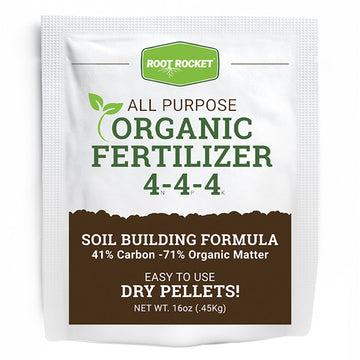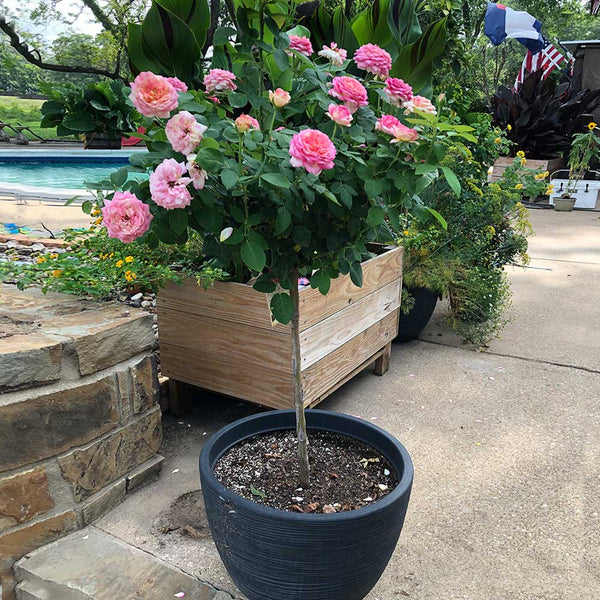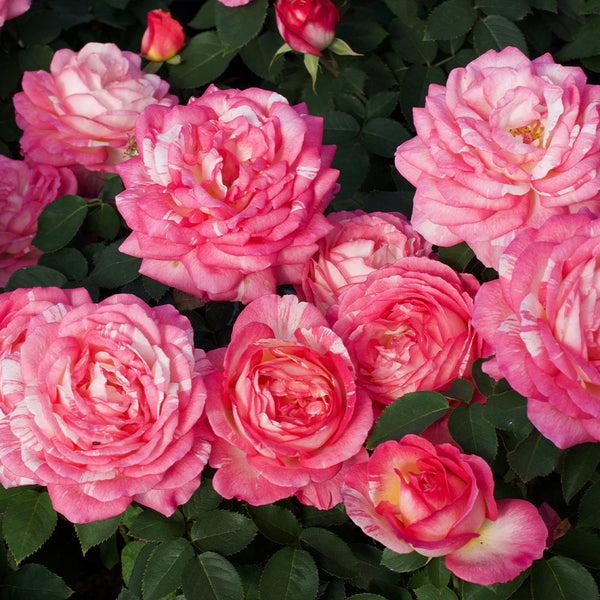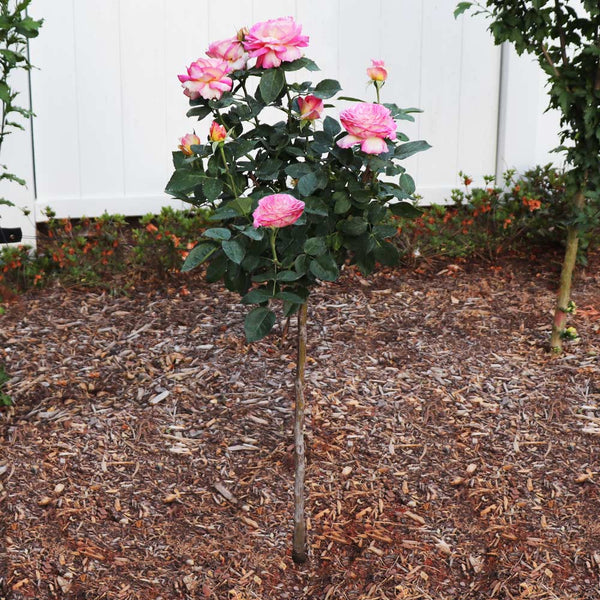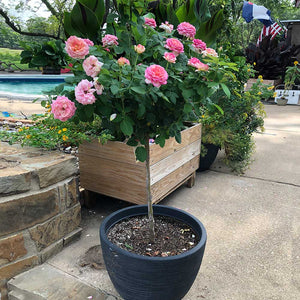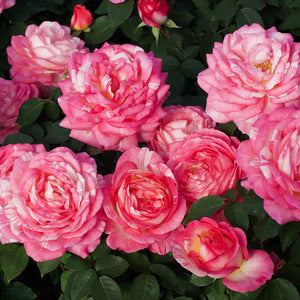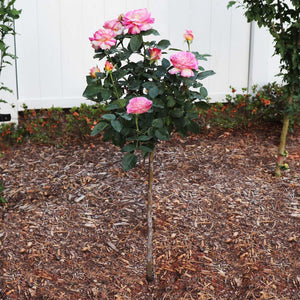Marc Chagall™ Rose Tree
Product Details
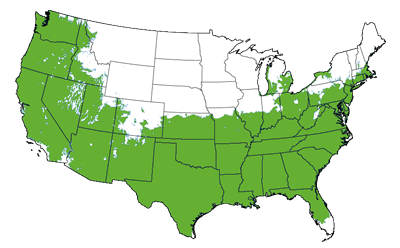 Growing Zones 6-9
Growing Zones 6-9
| Soil Type | Well Drained |
| Sunlight | Full |
| Drought Tolerance | Semi |
| Mature Height | 5-6 Feet |
| Mature Width | 2-3 Feet |
| Growth Rate | Moderate |
| Bloom Color | Pink |
| Shipping Restriction | AK, AZ, HI |
The Marc Chagall™ Rose Tree is a painter’s dream with its swirled mix of sunset colors. Just like a snowflake, no Marc Chagall™ rose ever looks the same. The variegated petals appear mostly pink with touches of yellow and cream streaks, creating a tree crowned with unique flowers.
A rose tree variety, the Marc Chagall™ resembles a compact tree that works well as a landscape accent or in patio containers. It has a thin trunk topped with light green foliage and layered flowers. Creating texture and height, you can use the container roses in entryways, porches, patios, and walkways.
The Marc Chagall™ has a mild, slightly fruity fragrance that can help to attract beneficial pollinators to your garden. The flower repeatedly blooms throughout the season, offering a constant spectacle of creamy pink flowers. Since it’s disease resistant, it will also fight off common rose problems such as powdery mildew.
An emerging and rare beauty, you won’t find the Marc Chagall™ Rose Tree at your local nursery. Order your rose tree today from Plantingtree.com for an unbeatable price and quick delivery.
When does the Marc Chagall™ Rose Tree bloom?
You can expect to see flowers from late spring to fall. As a repeat bloomer, you will get multiple rounds of rose blooms throughout the summer.
How can you winterize rose trees?
In cool climates, add a layer of mulch over the base of the plant to help retain moisture and add insulation to the rose. Avoid pruning roses in fall as this can affect the plant’s ability to overwinter properly.
Planting
Select a site with full to partial sun. Ideally, the plant should receive six hours of daily sunlight to produce the most blooms and become hardy. Mix in compost to your planting site before digging a hole twice the size of the container. Plant your rose level with the ground. Top with a layer of mulch to prevent weeds and retain moisture. Water deeply after planting.
Watering
Water your rose frequently until fully established. During the second season, reduce the watering frequency to once a week or more during periods of drought. Allow the soil to dry between watering.
Fertilizing
To encourage blooming, give your rose organic rose fertilizer once a month during the growing season. Stop any fertilizing in the fall.
Maintenance
You can prune your rose tree to help shape the plant; otherwise, pruning is not required. If you prune, do so in spring after the last frost just as the rose wakes up. Avoid pruning in the fall, as this can affect the rose’s ability to overwinter. Remove diseased and dead branches anytime.

